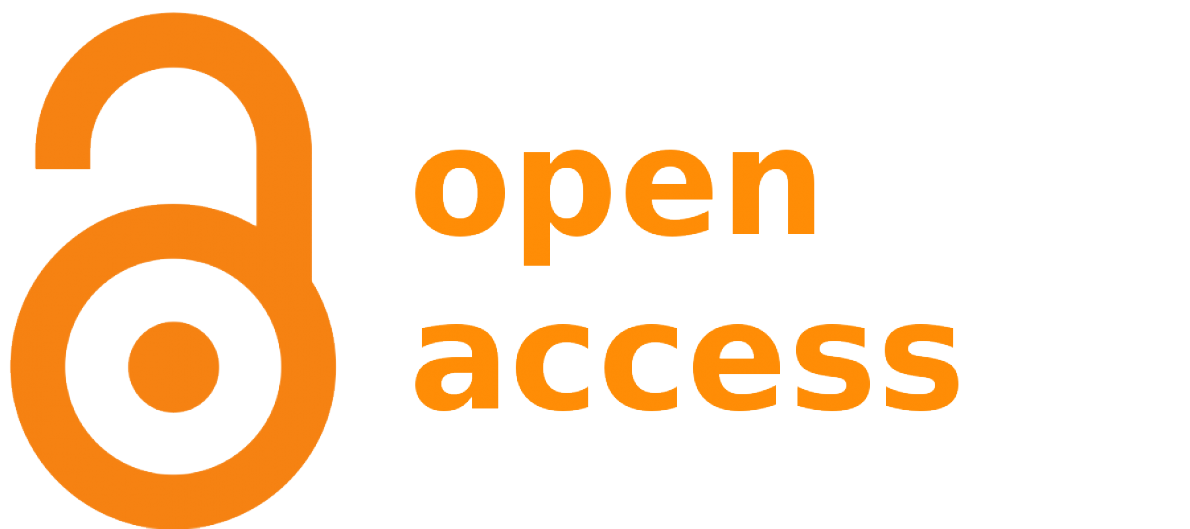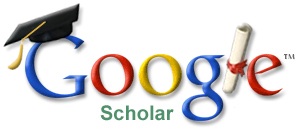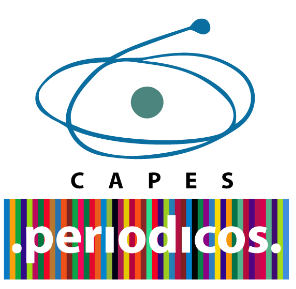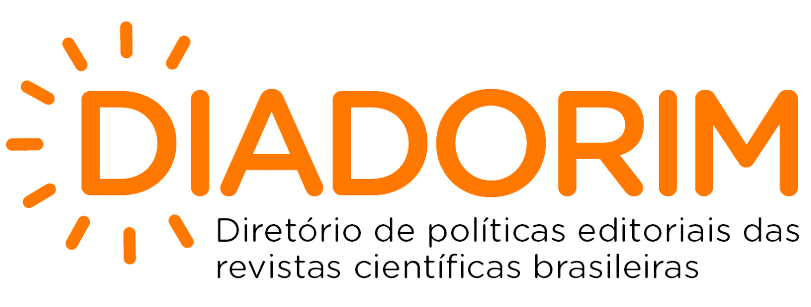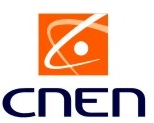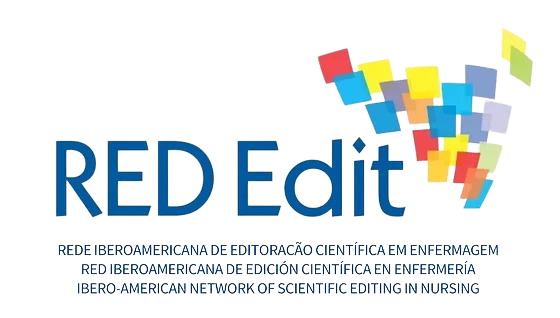Evaluación del tiempo de acción de la paleta de hielo sobre la sed en el postoperatorio
DOI:
https://doi.org/10.5433/anh.2020v2.id41605Palabras clave:
Sed, Sala de Recuperación, Hielo, Cuidados de Enfermería, Enfermería PerioperatoriaResumen
Objetivo: evaluar el tiempo de acción de una única paleta de hielo sobre la intensidad y el malestar de la sed al postoperatorio inmediato. Método: Estudio cuantitativo casi experimental, pre y posprueba, con muestra no probabilística de 63 pacientes adultos en el postoperatorio inmediato. La paleta de hielo de 10 milímetros fue administrada a los pacientes aprobados en el Protocolo de Seguridad en Gestión de la Sed, los cuales fueron encuestados a cada 10 minutos, hasta completar 40 minutos, acerca de la intensidad y el malestar de la sed, de acuerdo con escala visual numérica y la Escala de Malestar de la Sed Postoperatoria. Resultados: El promedio de intensidad para la sed fue de 8,54 y para el malestar de 6,76. Tras 10 minutos de la administración de la paleta de hielo, el promedio se ha reducido a 4,92 y 3,71, respectivamente. Hubo diferencia significativa en intensidad y malestar de la sed en los diferentes momentos (p<0,05) hasta los 30 minutos. Conclusiones: La administración de una única paleta de hielo de 10 milímetros es suficiente para minimizar significativamente la intensidad y el malestar de la sed del paciente quirúrgico por 30 minutos. Esos hallazgos requieren una reflexión sobre las prácticas realizadas en sala de recuperación posanestésica, priorizándose el cuidado efectivo y humanizado al paciente quirúrgico.Descargas
Citas
Conchon MF, Nascimento LA do, Fonseca LF, Aroni P. Perioperative thirst: an analysis from the perspective of the Symptom Management Theory. Rev esc enferm USP. 2015 Feb;49(1):122-8. doi: 10.1590/S0080-623420150000100016
Nascimento LA do, Garcia AKA, Conchon MF, Aroni P, Pierotti I, Martins PR, et al. Advances in the Management of Perioperative Patients' Thirst. AORN J. 2020 Feb 1;111(2):165-79. doi: 10.1002/aorn.12931
Armstrong LE, Kavouras SA. Thirst and Drinking Paradigms: Evolution from Single Factor Effects to Brainwide Dynamic Networks. Nutrients. 2019 Nov 22;11(12):2864. doi: 10.3390/nu11122864
Maldonado RN, Conchon MF, Birolim MM, Fonseca LF. Thirst of the orthopedic surgical patient in the immediate postoperative. Rev baiana enferm. 2020 Apr; 34: e34533. doi: 10.18471/rbe.v34.34533
Pierotti I, Fracarolli IFL, Fonseca LF, Aroni P. Evaluation of the intensity and discomfort of perioperative thirst. Esc Anna Nery. 2018;22(3):1-7. doi: 10.1590/2177-9465-ean-2017-0375
Martins PR, Fonseca LF, Rossetto EG, Mai LD. Elaboração e validação de Escala de Desconforto da Sede Perioperatória. Rev esc enferm USP. 2017; 51:e03240:1-8. doi: http://dx.doi.org/10.1590/S1980-220X2016029003240
McKemy DD, Neuhausser WM, Julius D. Identification of a cold receptor reveals a general role for TRP channels in thermosensation. Nature. 2002 Mar 10;416(6876):52-8. doi: 10.1038/nature719
Garcia AKA, Fonseca LF, Aroni P, Galvão CM. Strategies for thirst relief: integrative literature review. Rev Bras Enferm. 2016 Nov 1;69(6):1215-22. doi: 10.1590/0034-7167-2016-0317
Conchon MF, Fonseca LF. Efficacy of an Ice Popsicle on Thirst Management in the Immediate Postoperative Period: A Randomized Clinical Trial. J PeriAnesth Nurs. 2018 Apr 1;33(2):153-61. doi: 10.1016/J.JOPAN.2016.03.009
Nascimento LA do, Fonseca LF, dos Santos CB. Inter-rater Reliability Testing of the Safety Protocol for Thirst Management. J Perianesth Nurs. 2018 Aug 01;33(4):527-36. doi: 10.1016/J.JOPAN.2016.07.008
Perlas A, Davis L, Khan M, Mitsakakis N, Chan VWS. Gastric sonography in the fasted surgical patient: A prospective descriptive study. Anesth Analg. 2011 Jul;113(1):93-7. doi: 10.1213/ANE.0b013e31821b98c0
de-Aguilar-Nascimento JE, Salomão AB, Waitzberg DL, Dock-Nascimento DB, Correa MITD, Campos ACL, et al. ACERTO guidelines of perioperative nutritional interventions in elective general surgery. Rev Col Bras Cir. 2017 Dec;44(6):633-48. doi: 10.1590/0100-69912017006003
Practice Guidelines for Preoperative Fasting and the Use of Pharmacologic Agents to Reduce the Risk of Pulmonary Aspiration. Anesthesiology. 2017 Mar;126(3):376-93. doi: 10.1097/ALN.0000000000001452
Pierotti I, Nakaya TT, Garcia AKA, Nascimento LA do, Conchon MF, Fonseca LF. Avaliação do tempo de jejum e sede no paciente cirúrgico. Rev baiana enferm. 2018 Dec 27;32. doi: 10.18471/rbe.v32.27679
Saker P, Carey S, Grohmann M, Farrell MJ, Ryan PJ, Egan GF, et al. Regional brain responses associated with using imagination to evoke and satiate thirst. Proc Natl Acad Sci. 2020 Jun 1;117(24):13750-6. doi: 10.1073/pnas.2002825117
Eccles R, Du-Plessis L, Dommels Y, Wilkinson JEE. Cold pleasure. Why we like ice drinks, ice-lollies and ice cream. Appetite. 2013 Dec;71(1):357-60. doi: 10.1016/j.appet.2013.09.011
Zimmerman CA, Lin Y-C, Leib DE, Guo L, Huey EL, Daly GE, et al. Thirst neurons anticipate the homeostatic consequences of eating and drinking. Nature. 2016 Sep 3;537(7622):680-4. doi: 10.1038/nature18950
Aroni P, Fonseca LF, Ciol MA, Margatho AS, Galvão CM. The use of mentholated popsicle to reduce thirst during preoperative fasting: A randomised controlled trial. J Clin Nurs. 2020 Mar 30;29(5-6):840-51. doi: 10.1111/jocn.15138
Puntillo KA, Arai S, Cooper B, Stotts N, Nelson J. A randosmized clinical trial of an intervention to relieve thirst and dry mouth in intensive care unit patients. Intensive Care Med. 2014;40(9):1295-302. doi: 10.1007 / s00134-014-3339-z
Descargas
Publicado
Cómo citar
Número
Sección
Licencia
Derechos de autor 2020 Advances in Nursing and Health

Esta obra está bajo una licencia internacional Creative Commons Atribución 4.0.
Todo o conteúdo do periódico this licenciado sob a Licença Creative Commons Attribution, do type atribuição do CC-BY.
Los autores mantienen los derechos de autor y se solicita a los/las autores/as que indiquen la primera publicación en esta revista en caso de republicación. Los artículos publicados en Advances in Nursing and Health están licenciados bajo la Licencia Creative Commons Atribución 4.0 Internacional, que garantiza el Acceso Abierto. Esta licencia permite que cualquier usuario/a lea, descargue, copie y comparta el contenido, siempre que sea debidamente citado. También autoriza la reutilización del material, incluida su distribución, adaptación y creación de obras derivadas en cualquier formato o medio, siempre que se otorgue el crédito correspondiente, se proporcione un enlace a la licencia y se indique si se realizaron cambios. Además, la licencia permite el uso comercial del contenido.






